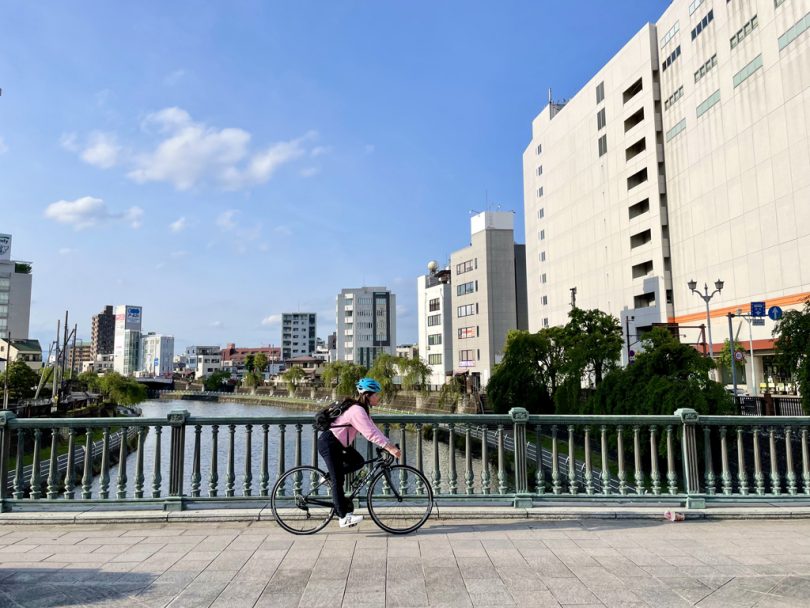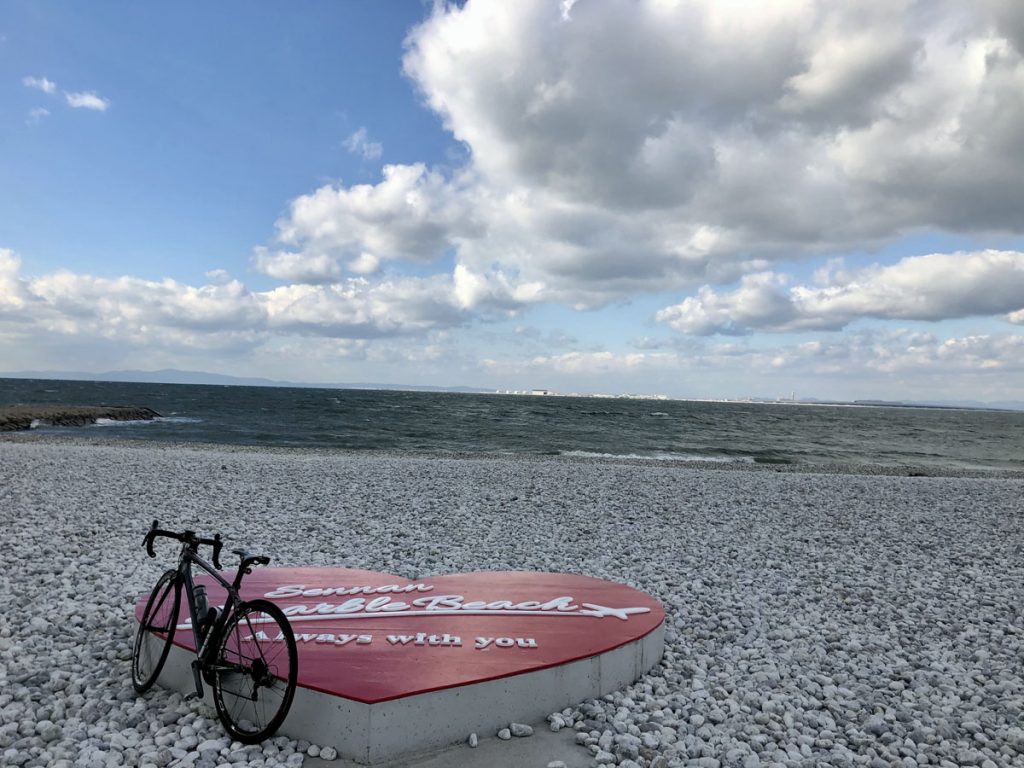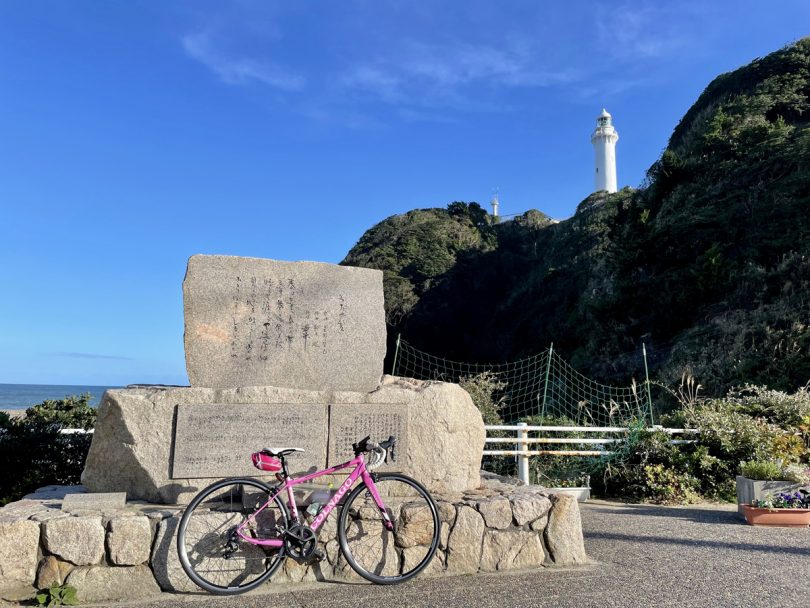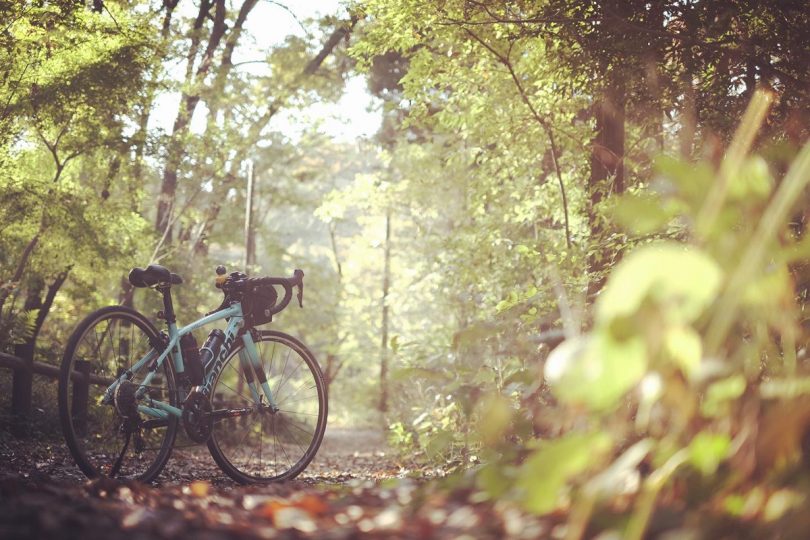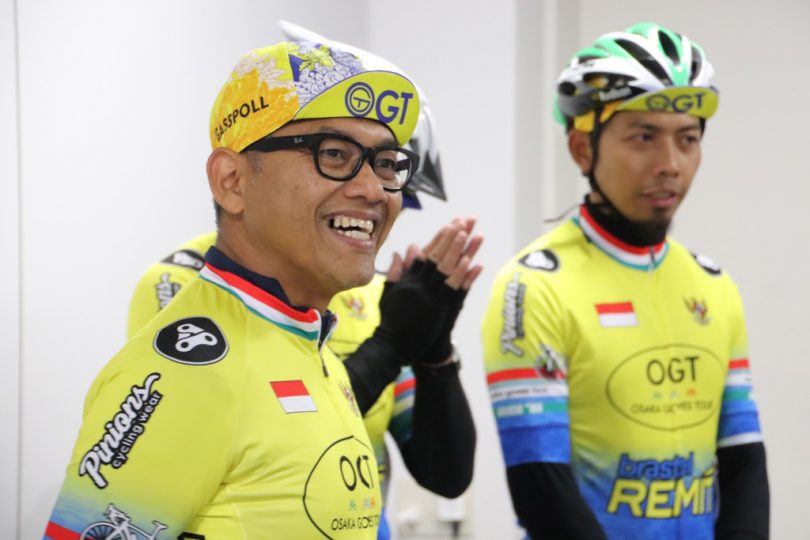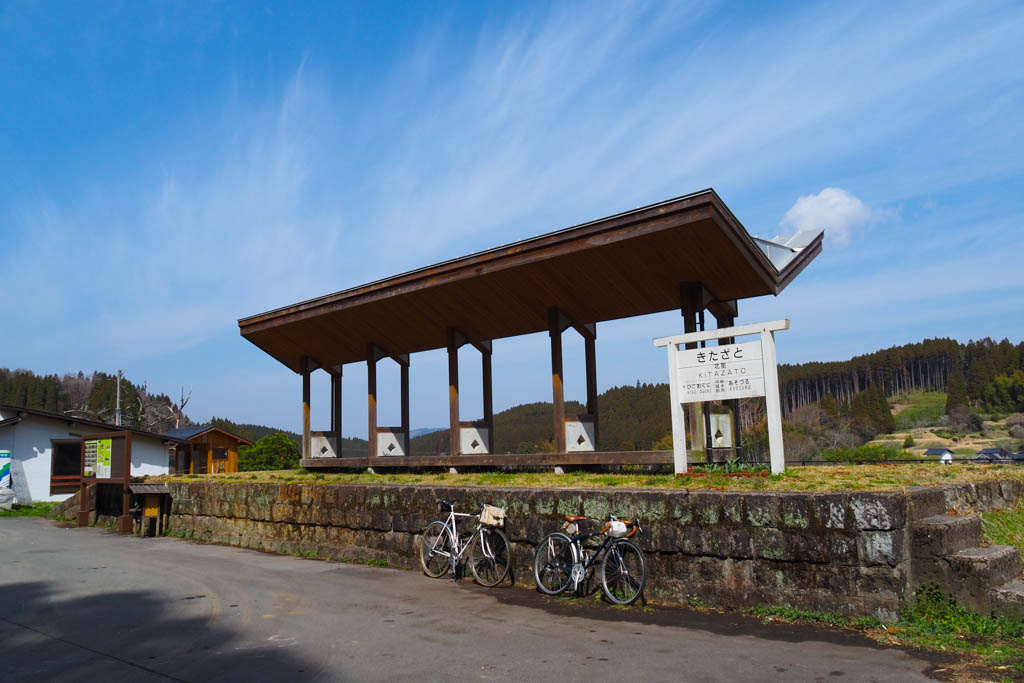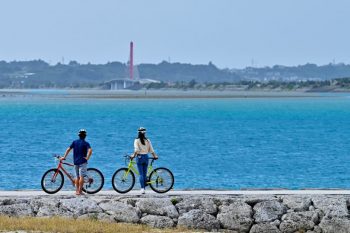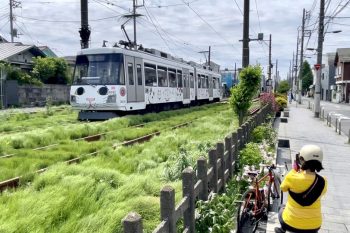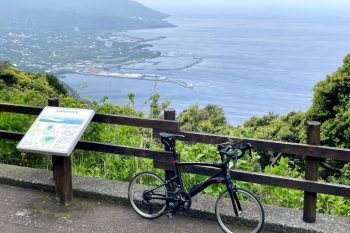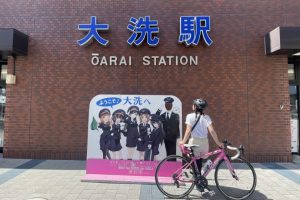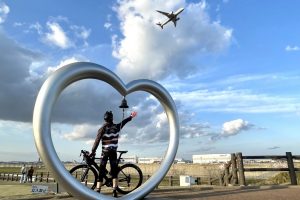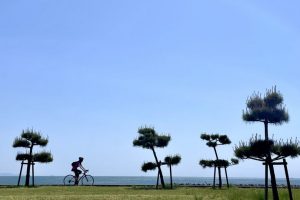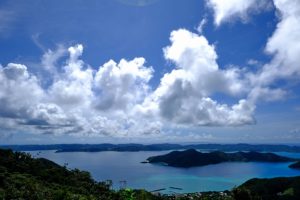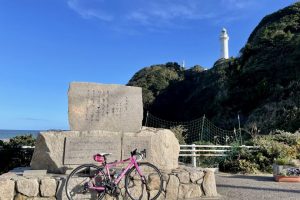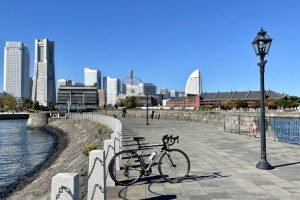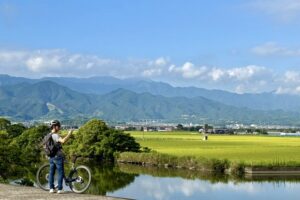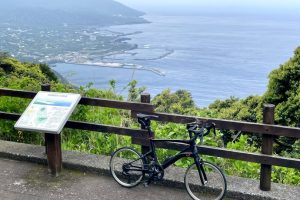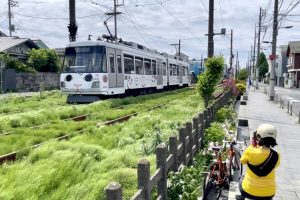Saigoku Kaido (former Sanyo Road) was built in the Edo period (1603-1867) to connect Kyoto and western Japan (Shimonoseki and Kitakyushu), and became a place where various things, from people and goods to information and culture, came and went.
I have traveled along a part of Saigoku Kaido in Hiroshima City, searching for the charms of the old and new Hiroshima in everyday life.
Contents
North Exit of Hiroshima Station (Start)
The start is at the north exit of Hiroshima Station.
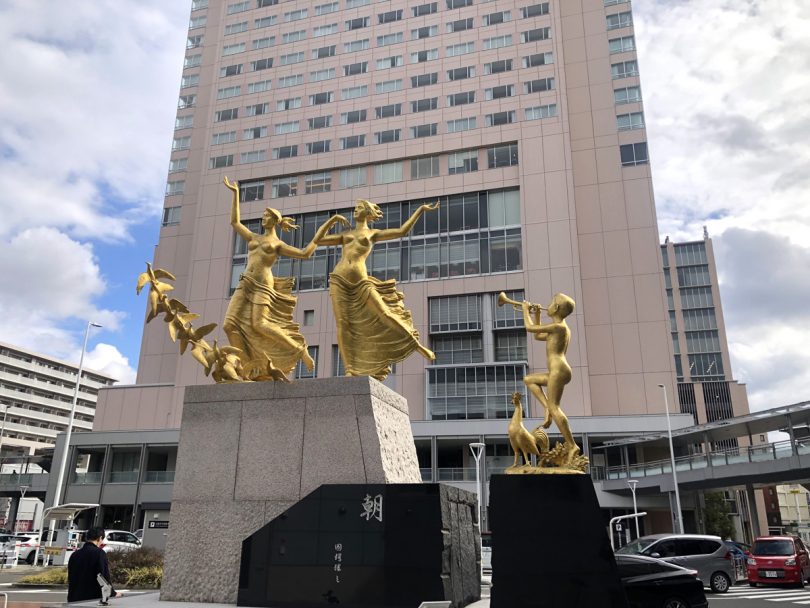
As of January 2022, the south exit has been narrowed due to construction, so if you get access to Hiroshima station by train bringing your bike, I recommend starting from the north exit.
Atago Railroad Crossing
A large railroad crossing on the east side of Hiroshima Station leads to Saigoku Kaido road.
From the pedestrian bridge, you can see all the lines of Hiroshima Station.
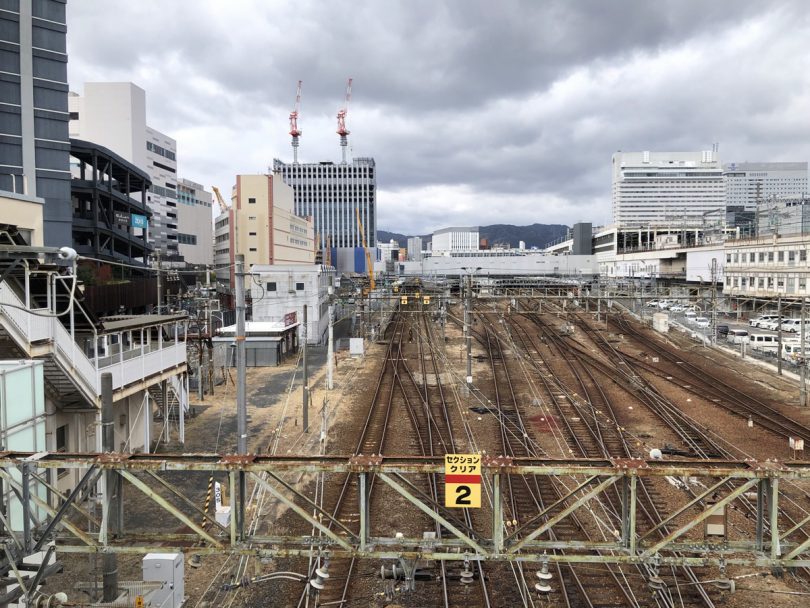
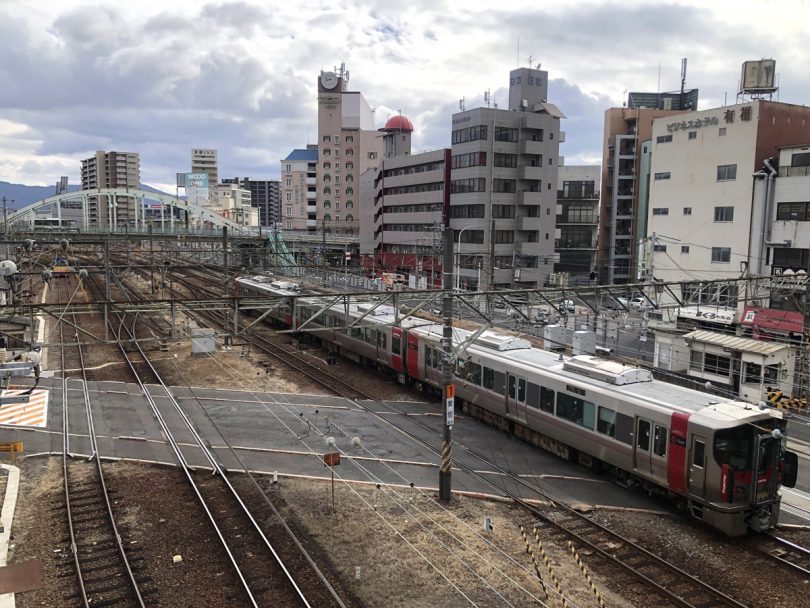
Enko Bridge
Cross Atago railroad crossing and follow the road to Enko Bridge, which spans Enko River.
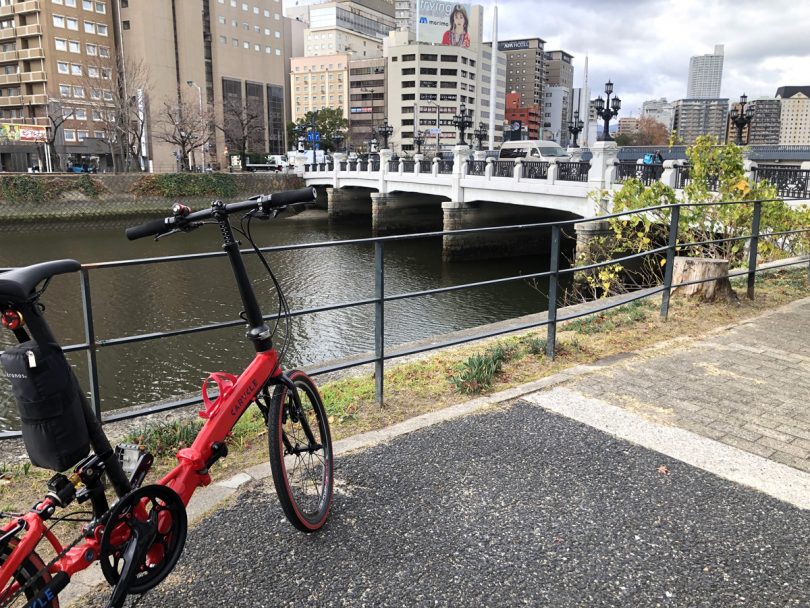
The bridge is ornately decorated as a gateway to the city of Hiroshima.
shimaji coffee roasters
“shimaji coffee roasters” is located near Matoba-cho Station on Hiroshima Electric Railway (tramcar) and is famous for its shallow-roasted coffee. In addition to the coffee, the sweets such as butter sandwiches and pound cakes are also excellent.
I had a cold pastry called cassata and a cup of Guatemalan coffee.
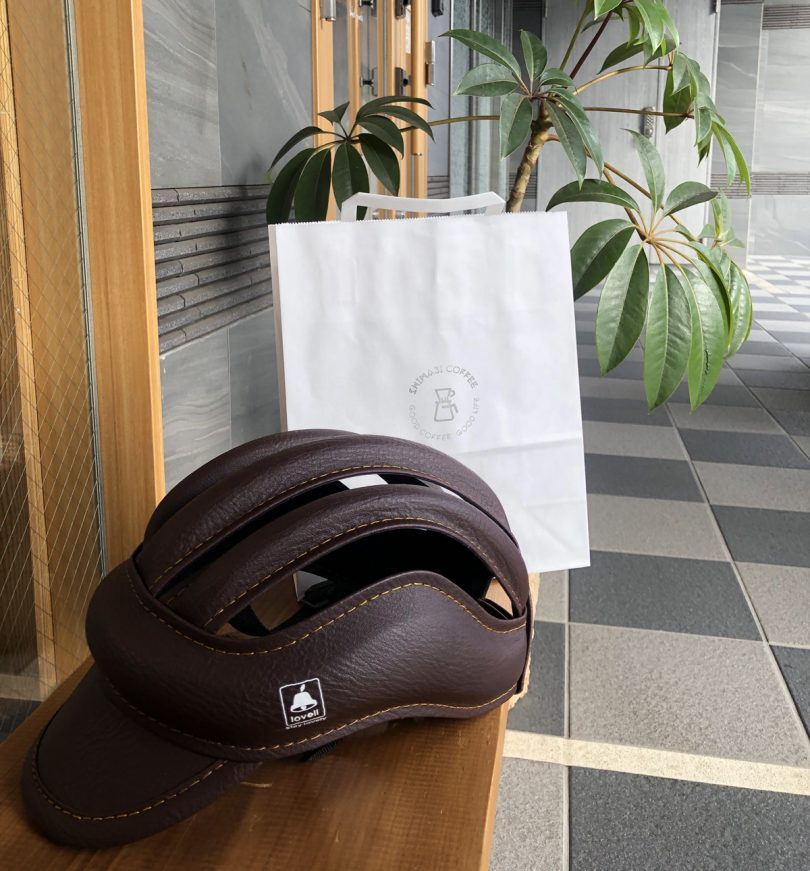

Kyobashi Bridge

Until you cross Kyobashi Bridge, one street north of the street where the streetcar runs is Saigoku Kaido.
There are six rivers flowing through the city of Hiroshima: Enko River, Kyobashi River, Motoyasu River, Honkawa River (formerly Ota River), Tenma River, and Ota River Spillway, and Saigoku Kaido follows a route that crosses all of them.
Kirin Beer Hall
Cross Kyobashi Bridge and head south to the road leading to Hondori shopping street. On the west wall of the main building of Hiroshima Parco, some of the exterior tiles of Kirin Beer Hall are still visible.

Opened in 1938, Kirin Beer Hall was destroyed by the atomic bomb dropped on Hiroshima on August 6, 1945, but it reopened for business in December of the same year, and has been a popular place for many citizens to relax ever since.
In 1991, the building was demolished and Hiroshima Parco was built on the site, but some of the tiles on the exterior wall have been preserved as shown in the photo, in order to pass on the devastation of the atomic bomb to future generations.
Hondroi (Main Street) Shopping Arcade
Bicycles are not allowed in the shopping street, so I proceeded to other streets. I came across a tramcar wrapping car commemorating its 30th anniversary.
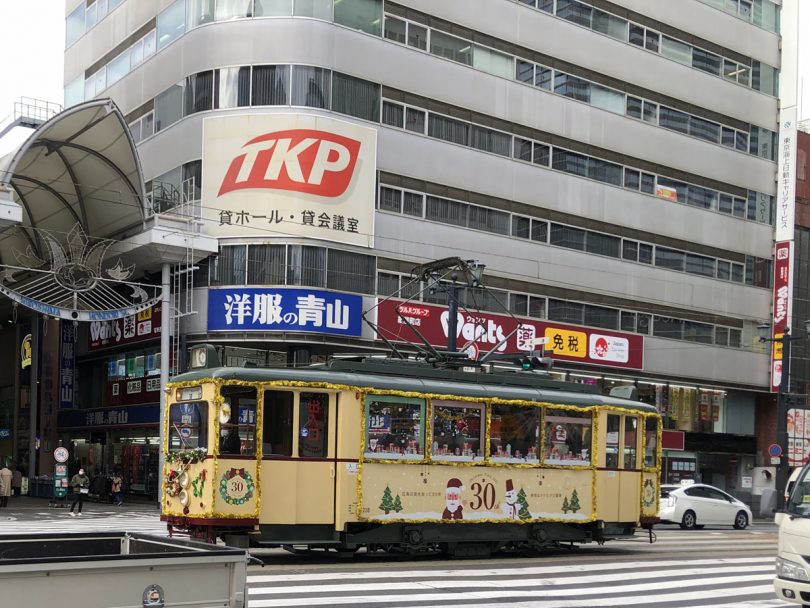
Motoyasu Bridge
After passing through Hondori shopping street, you will see Motoyasu Bridge in Peace Memorial Park.
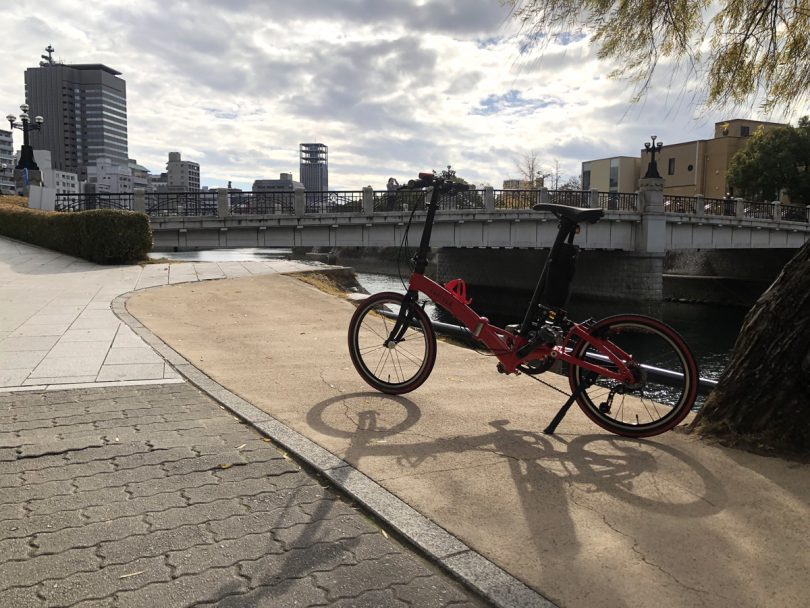
The road crossing the park from Motoyasu Bridge used to be called Nakajima Hondori, a shopping street lined with banks, kimono stores, photo studios, and other large stores.
The streets were completely changed by the atomic bomb, but the shape of the street still remains in the park.

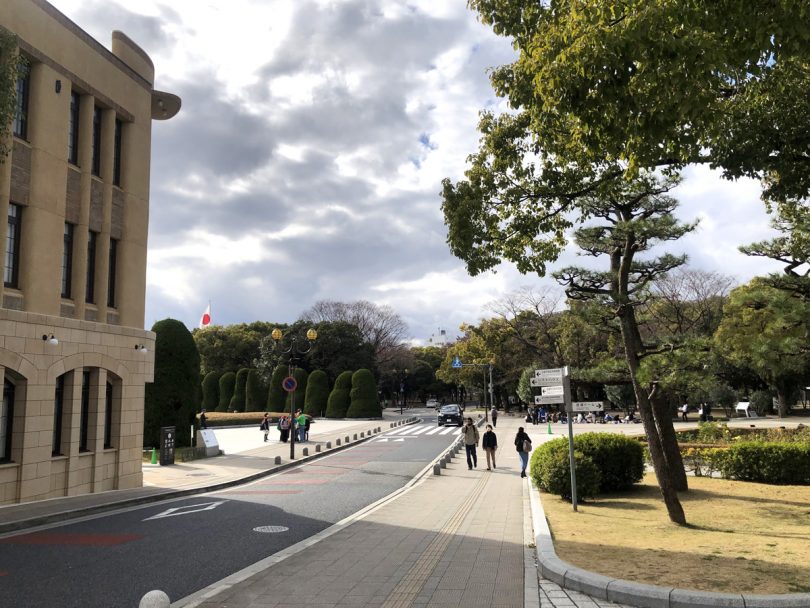
At a shrine along the street, I found a sign saying “Old Sanyo Road.”
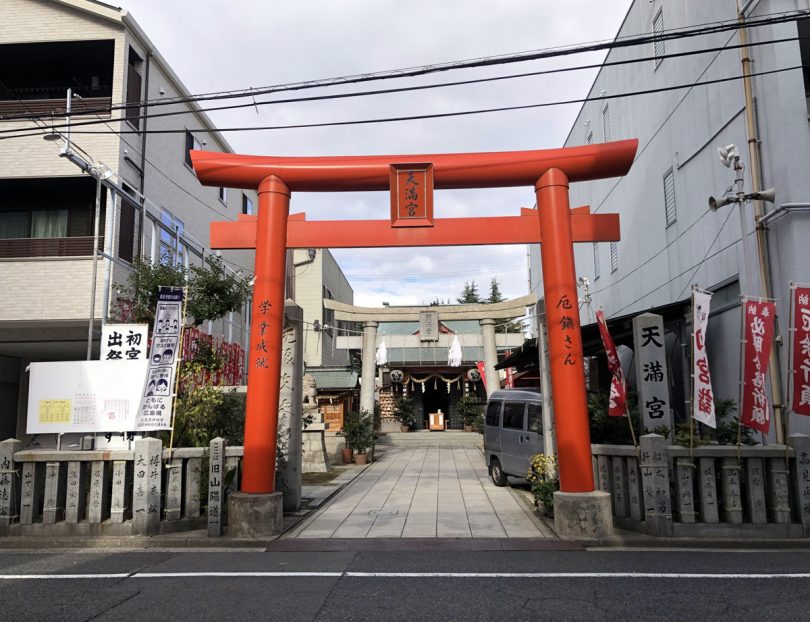
Nishi Hiroshima Station and KOI PLACE
After crossing Ota River, you will reach the center of Koi district, where JR Nishi-Hiroshima Station and Hiroden Nishi-Hiroshima Station are located next to each other.
To the north of Hiroden Nishi-Hiroshima Station is KOI PLACE, a collection of plazas and community facilities.
You can relax in a hammock or on a terrace and watch the tramcars, one of the symbols of Hiroshima

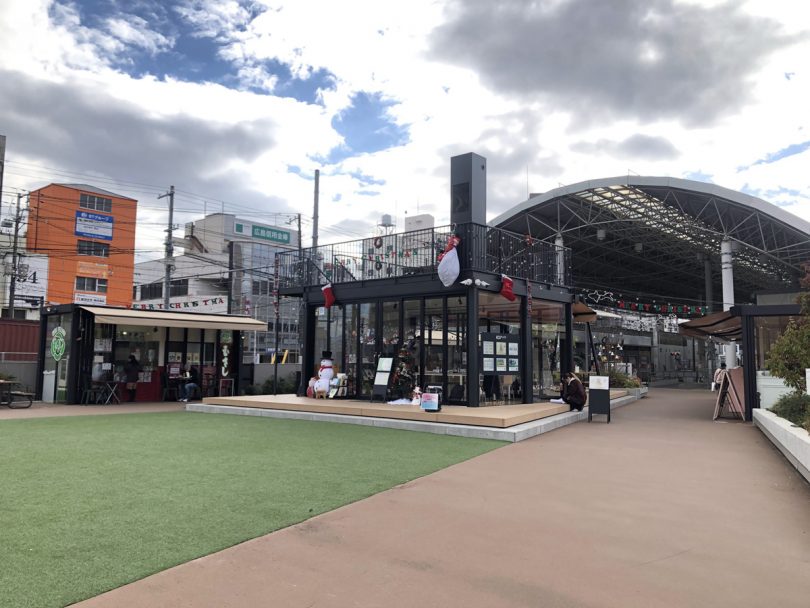
The teahouse was a place to quench the thirst of travelers passing by on the street.
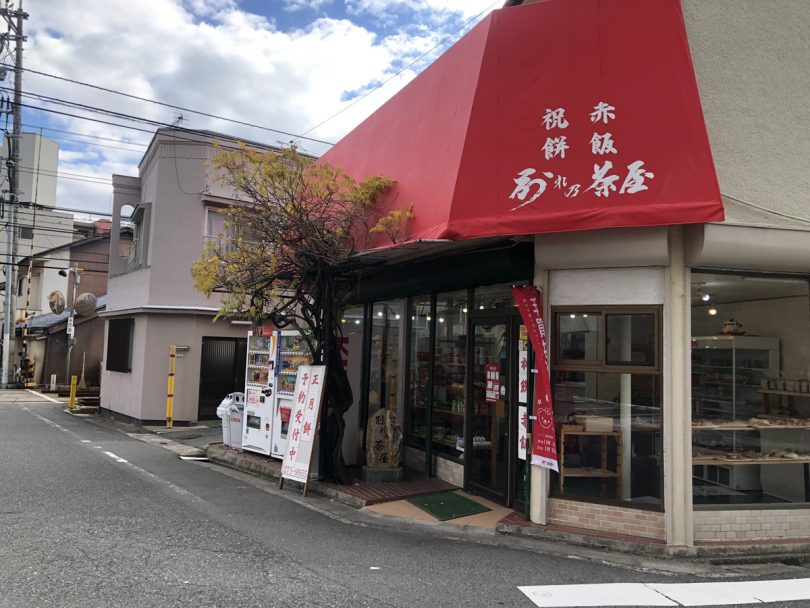
Even today, there is a teahouse called “Farewell Teahouse” along the street in Koihonmachi, Nishi-ku.
The Historic Town of Kusatsu
About 3 km from Nishi-Hiroshima Station, you will pass through a town named “Kusatsu” along the street.
In the Edo period (1603-1867), the town was a prosperous interlude, with a guardhouse to control the shipment of goods for sale by Hiroshima Clan (Miyoshi Clan for a time), and Hamada Clan’s shipyard.
There are many temples and shrines that have a special meaning to the town, and there are still places where you can feel the history everywhere.
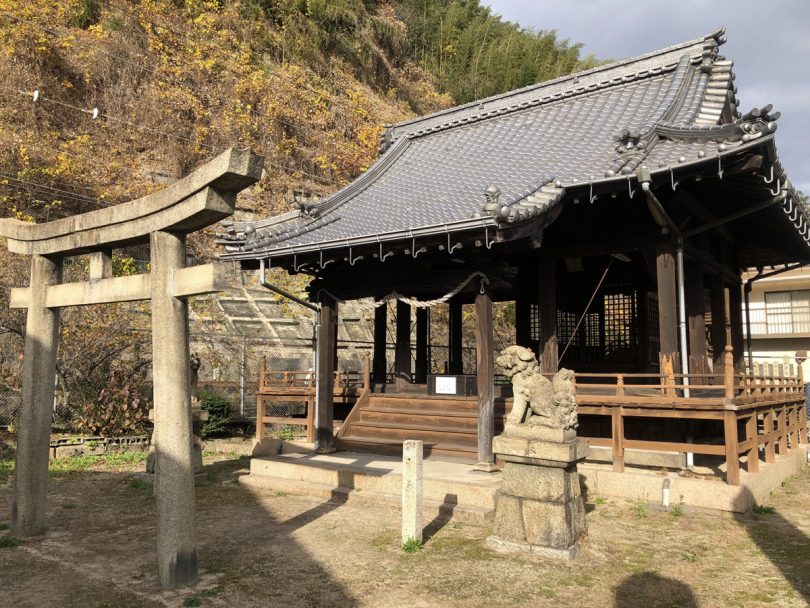

Rainbow SOKO HIROSHIMA
I arrived at a stylish space called “Rainbow SOKO (warehouse) Hiroshima.”
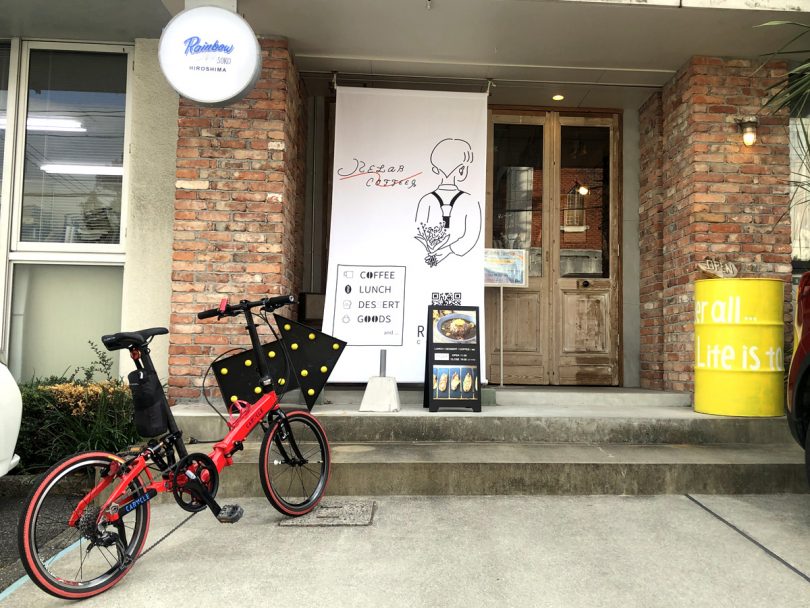
There is a café and a space where creators can set up a store, and I couldn’t stop feeling excited from the moment I entered the store.
If you buy a drink at the coffee stand, you can freely use the space inside the facility for meetings and gatherings.
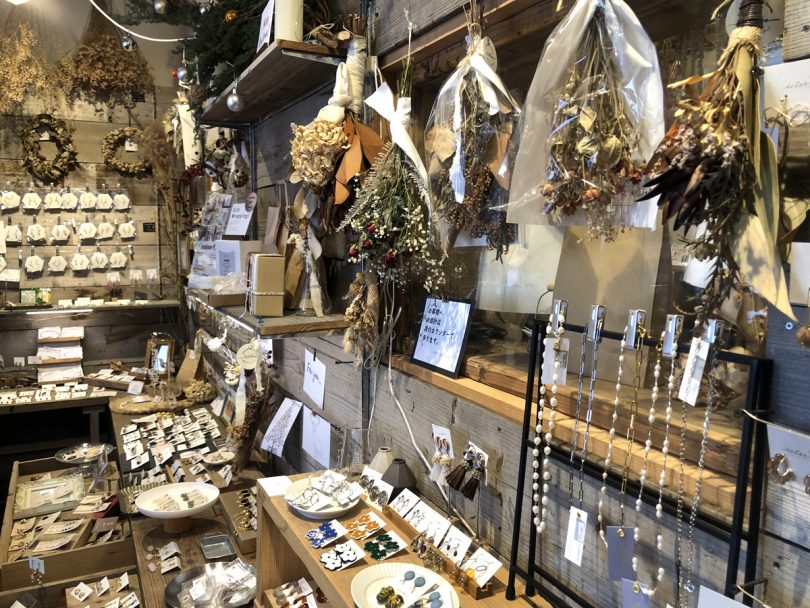

I had a curry and finished pottering for about 10km.
Course Introduction
※Bicycles are not allowed in Hondori shopping arcade, so I used other streets.
※Bicycles are not allowed in Peace Memorial Park, so bicycles must be pushed through the park.
Summary
I traveled around Hiroshima City, focusing on the “old road” called Saigoku Kaido.
I felt the history and culture of the area from the casual roads I usually use, and found new favorite spots in this relaxed trip.
You can also rent bicycles near Hiroshima Station, so why not take advantage of this service?


